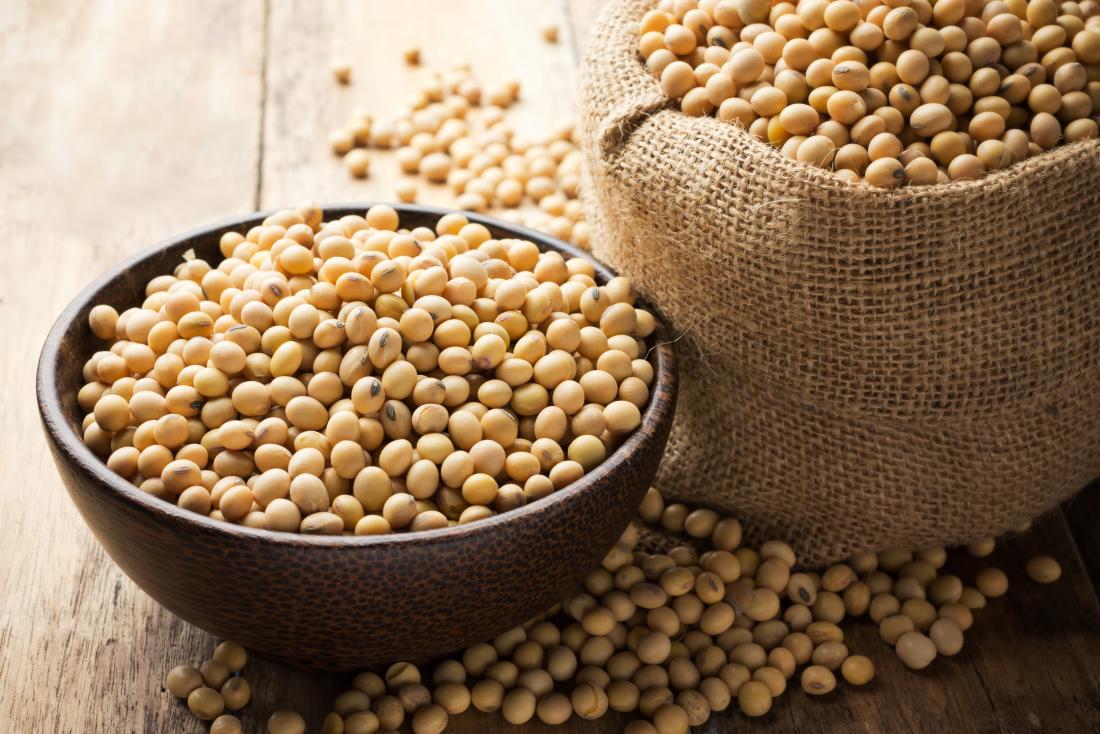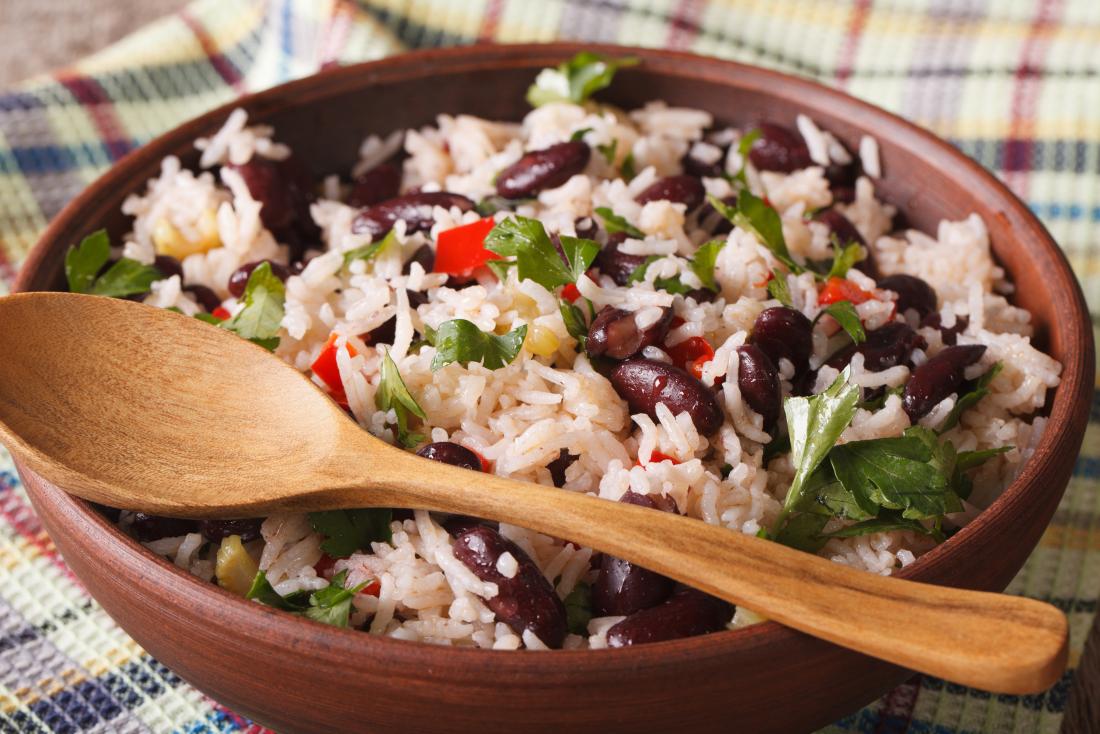Beans offer a range of potential health benefits due to their high nutrient content. Some of the potential benefits that they provide include:
- reducing cholesterol
- decreasing blood sugar levels
- providing protein for energy
Below, we discuss some of the most healthful beans and their benefits. We also cover how to incorporate more beans into a balanced diet.
1. Soybeans

Soybeans are a nutritious source of protein.
Soybeans, or edamame, are a popular bean in many parts of Asia. People consume soybeans raw, cooked, or in the form of tofu.
These beans are very high in protein. One cup of cooked soybeans contains 31.32 grams (g) of protein, making them an excellent choice for vegetarians and vegans.
The same quantity of soybeans also contains:
There is some scientific evidence to support claims that soybeans can help reduce the risk of cancer. Researchers believe that antioxidants called isoflavones are responsible for this effect.
A 2017 review of studies found that soybeans may help reduce the risk of stomach cancer and other gastrointestinal cancers. However, the authors found that only women who consumed soy products had a reduced risk of these types of cancer — the effect was not the same in men.
2. Kidney beans
Kidney beans are a popular ingredient in chili, salads, and rice dishes. One cup of cooked kidney beans includes:
- 15.35 g of protein
- 13.10 g of fiber
- 5.20 mg of iron
Kidney beans are an excellent source of fiber. The high fiber content can help reduce blood sugar levels.
For example, one study found that consuming dark red kidney beans and rice together was better for helping a person control their blood sugar levels than consuming rice alone.
The authors also stated that a combination of rice and kidney beans forms the basis of many traditional dishes, so people may find it relatively easy to adhere to this type of healthful diet.
3. Chickpeas

Chickpeas may help lower blood sugar levels.
Chickpeas are rich in essential nutrients, with one cup of cooked chickpeas containing:
- 14.53 g of protein
- 12.50 g of fiber
- 4.74 mg of iron
Another name for chickpeas is garbanzo beans. Chickpeas are popular in salads, and people also often roast them as a snack or use them to make hummus.
Chickpeas are similar to other beans in that they may help reduce people’s risk of heart disease and cancer. They can also help people maintain their blood sugar levels and stay at a healthy weight.
One small study found that participants who consumed hummus had lower blood sugar levels than those who ate white bread instead.
Other research from 2016 also found that chickpeas in hummus may help people with diabetes manage their blood sugar levels. In addition, the authors noted that consuming hummus may reduce the risk of heart disease and help people get enough legumes each day.
It is important to keep in mind that both of these studies received funding from hummus manufacturers.
4. Navy beans
Also called haricot beans, navy beans are a great source of many nutrients. One cup of cooked navy beans includes:
- 19.10 g of fiber
- 14.98 g of protein
- 4.30 mg of iron
Navy beans get their name from their use as a staple food in American Navy kitchens. They also contain some B vitamins.
Navy beans may help reduce cholesterol and the risk of metabolic syndrome.
In a small study of 38 children, researchers found that those who increased their consumption of navy beans and rice bran improved their cholesterol levels.
The authors of the study stated that the health benefits of these foods are well established in adults with high cholesterol.
5. Black beans
People often use black beans in South and Central American cuisine. Black beans are a common ingredient in chili, rice and bean dishes, and burritos.
A cup of cooked black beans contains:
- 15.24 g of protein
- 15.00 g of fiber
- 3.61 mg of iron
As with other beans on this list, black beans have a positive effect on blood sugar levels.
For example, a small study of 17 men and women with type 2 diabetes found that adding black beans to rice led to lower blood sugar levels compared with rice alone.
6. Pinto beans

Pinto beans are a good source of fiber and easy to include in a healthful diet.
Pinto beans contain plenty of protein and fiber, and they are common in Mexican and Southwestern cuisine in the United States.
People eat pinto beans fried, mashed, or whole.
An earlier 2007 study found that daily consumption of pinto beans lowered risk factors for heart disease in people who were mildly resistant to insulin.
While these results are promising, more recent studies are necessary to confirm this potential benefit.
Takeaway
Beans are an excellent source of fiber, protein, and iron. Studies have shown that many of the nutrients in beans have potential health benefits, which range from decreasing cholesterol to maintaining low blood sugar.
People can add beans to their favorite recipes, replace meat with beans, and try new bean-based spreads.
The beans in this article are available for purchase online:
